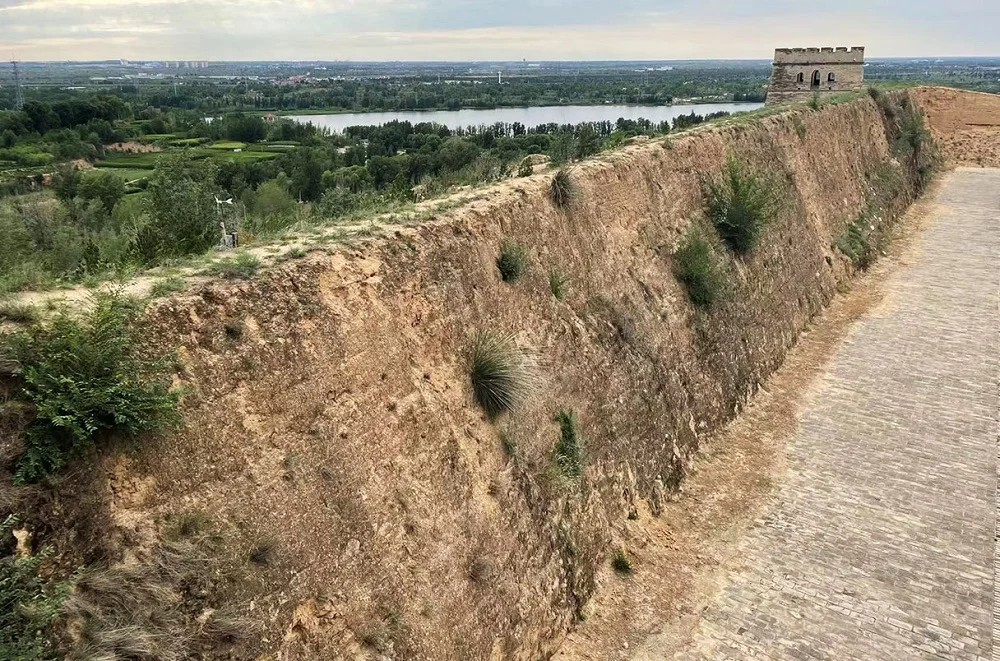What protects the Great Wall from erosion
- December 9, 2023
- 0
The Great Wall of China was once much larger. What remains standing today is only a small part of the great walls built on the country’s northern borders
The Great Wall of China was once much larger. What remains standing today is only a small part of the great walls built on the country’s northern borders

The Great Wall of China was once much larger. What remains standing today is only a small part of the great walls built on the country’s northern borders more than 2,000 years ago and destroyed over time. But many remaining sections of the walls appear to help protect from an unlikely source: Thin layers of bacteria, moss, lichens and other organisms known as biocrusts that grow on the soil surface.
A study published today in the journal Science Advances shows that these so-called “living shells” likely protected parts of the Great Wall from wind, rain and other erosive forces. With advances in technology and research, scientists may eventually develop new bioshells to prevent further deterioration of the wall.
Ecologist Nicole Barger of the Nature Conservancy, who was not involved in the new study, said the study was “innovative and creative.” But he notes that this is hardly surprising, given the increasing recognition of the protective effects of biocrusts: These growth networks are known to help stabilize dryland ecosystems and prevent soil erosion.
Many of the most famous and visited sections of the Great Wall are made of stone or brick, but other parts are built from soil compacted by workers, often called rammed earth. Over time, this material can break down as rain infiltrates, wind blows away the soil, salt crystals form inside, and temperatures fluctuate.
But this compacted soil, like the natural soils surrounding it, can also host biocrusts. These growth layers are estimated to cover approximately 12% of the planet’s land surface and are concentrated in regions with drier climates, including northern China. They come in many forms: from fine networks of bacteria only millimeters thick to denser layers of moss and lichens up to several centimeters high.
Soil scientist Bo Xiao of China Agricultural University and his colleagues wanted to know whether biocrusts could play a stabilizing role for a man-made structure like the Great Wall of China. Throughout the sections they examined, biocrusts composed mostly of photosynthetic microbes called algae or cyanobacteria covered more than two-thirds of the structure. The team took samples from different parts of the wall covered with biocrust and compared their physical properties with those of bare, compacted soil without biocrust.

Compared to bare areas, compacted soil covered with biocrust was less porous and had higher shear and compressive strength, the team reported today.
Researchers suggest that these and other biocrust-related features protect the Great Wall from degradation in several ways, including reducing wind erosion, preventing water and salt intrusion, and increasing the overall stability of compacted soil. Perhaps unsurprisingly, thicker biocrusts dominated by algae were generally more protective than thin biocrusts dominated by cyanobacteria.
Ecologist Bettina Weber from the University of Graz praises the team’s efforts to investigate whether the protective effects of biocrusts can be applied to the cultural heritage site. She suggests that her findings could help introduce biocrust research into new scientific fields.
The study shows that the results of the Great Wall contradict the widespread view of heritage conservation that plant growth would damage buildings or archaeological sites. But study author Matthew Bowker, an ecologist at Northern Arizona University, says much of this fear stems from the fact that plants can damage buildings with their growing roots, and biocrusts do not have penetrating root systems.
Biocrusts in general are under threat. Some recent studies warn that with climate change and intensive land use in the next few decades, many biocrusts may disappear, taking their protective benefits with them. This loss could have consequences for the Great Wall, a new study warns. Bowker notes that as the climate along the Great Wall warms, thicker crusts dominated by algae may give way to thinner crusts of cyanobacteria that need less water.
Recently, laboratories around the world have been investigating whether damaged or degraded bioshells can be repaired by stimulating their growth, but Bowker says these efforts remain in the research and development phase. One challenge is that scientists are still trying to understand how long it takes different types of biocrust to grow in different climates and levels of disturbance; Estimates range from years to centuries.
But deliberately growing biocrust along a relatively small structure like the Great Wall would be easier than trying to regenerate biocrust across hundreds of thousands of acres, Barger noted. When it comes to “China’s cultural symbol of Chinese civilization,” Xiao says it will be important to find effective ways to preserve the site for future generations.
Source: Port Altele
As an experienced journalist and author, Mary has been reporting on the latest news and trends for over 5 years. With a passion for uncovering the stories behind the headlines, Mary has earned a reputation as a trusted voice in the world of journalism. Her writing style is insightful, engaging and thought-provoking, as she takes a deep dive into the most pressing issues of our time.